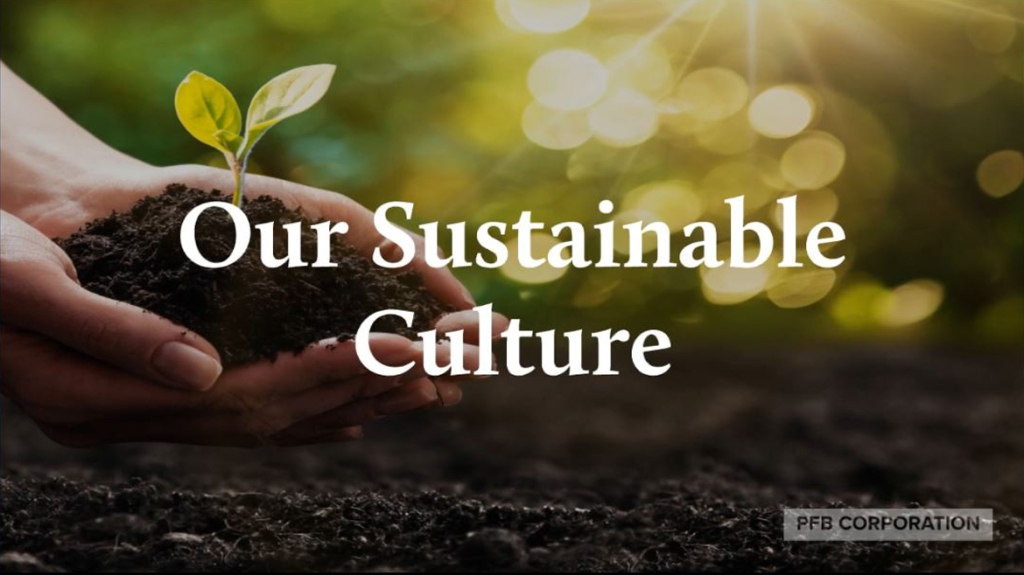Sustainability. A word we are all familiar with ever since the industry moved on from the “Green” movement. Yet while we know the definition of sustainability as it was at the start of the sustainability movement, have we as a whole kept up with the ever-changing concept of sustainability?

Initially sustainability meant that what you produce as a manufacturer would not harm the planet or the people on it. That was the benchmark that we as manufacturers measured ourselves by. At the outset of the sustainability movement, that in itself was a good step in the right direction.
Now, the concept of sustainability has grown and progressed into an overarching thought philosophy of not just the products you make, but the way businesses operate, the way they treat people and the future impacts both environmentally and socially as well.
At PFB Corporation, we have embraced the changes and impact of the future of sustainability, and incorporated it into our business practices with our Sustainable Products, Practice and People ideology. No longer is it just about the products we produce –though they are still an integral part of our sustainable promise, but it now encompasses the way we do business on a daily basis. Manufacturing has historically received low marks in sustainability due to raw material consumption, chemicals, etc. At PFB, we are pleased to show our sustainability reporting every year, thus illustrating the ways our operations have continued to improve their sustainable operations.

As the only vertically-integrated manufacturer of EPS in North America, we have one of the largest offerings of sustainable brands and product selections. With a product mix that is inherently sustainable and adds to the energy efficient building industry, it is our goal to continue to provide a higher quality of product that gives customers a sense of comfort in knowing that not only do our product not hurt the environment, but help create healthier, sustainable spaces for them as well.
Our Sustainable culture, C. Alan Smith, Executive Chairman of the Board states, “Sustainability is about people. It is about the impact that our actions have on people. We are focused on activities that have positive impacts for our customers, for our employees and for the environment in our communities.”
As an organization we understand that sustainability cannot be stagnant. We cannot rest on our benchmark and be happy with today’s efforts. Instead, with a dedicated Sustainability Director, PFB continues to improve our sustainable practices and find new ways to provide sustainable benefits to everyone from our employees to our customers.

We are always looking for ways to make a difference in our environment. To learn more about our sustainable promise, check out our environmental data, or view our sustainable products visit https://www.pfbsustainability.com/
Filed under: Energy Efficiency, Expanded Polystyrene EPS, Insulated Concrete Forms ICF, Sustainability or Green | Tagged: green products, PFB Corporation, Sustainability, sustainable initiative | Leave a comment »





